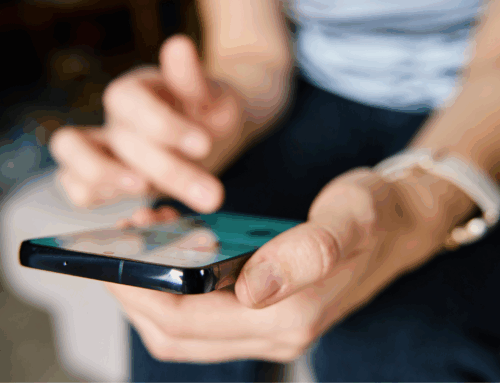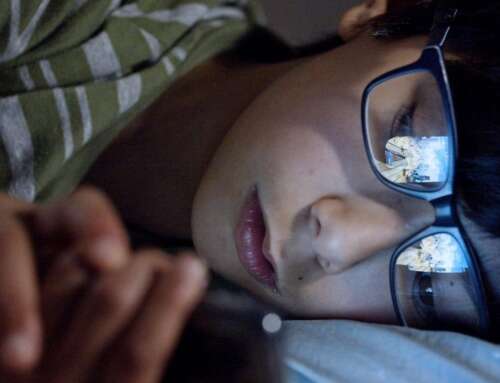When it comes to excessive device use, there’s nothing wrong with young people – they’re just the first generation ever to grow up with unprecedented access to technology that’s been specifically designed to exploit weaknesses in human psychology, says digital wellbeing and learning researcher and educator Dr Kristy Goodwin.
According to Dr Goodwin, who spoke about managing attention span in the age of digital distraction Generation Next’s Mental Health and Wellbeing of Young People seminar in Adelaide last week, these weaknesses lie in the prefrontal cortex, the area of the brain which allows us to direct our attention, and one of the last areas to fully develop. In females, the prefrontal cortex isn’t fully developed until the early twenties, in males the mid-twenties.
It is therefore partly their biology, she says, that makes young people especially susceptible to digital distraction.
In an interview following her presentation, Dr Goodwin told Generation Next that these issues aren’t limited to young people. Children and teens also find it more difficult to regulate their technology use because they aren’t seeing this modelled by the adults in their life – such as when their own parents prioritise their phones over them.
One of the more insidious methods tech companies use to hijack attention is to exploit the state of flow. Under the right circumstances, flow is incredibly beneficial she says, and you know you are in it when you get so involved in a task that you lose track of time. It’s the state that gets books written, buildings designed and (most miraculously of all) bathrooms cleaned.
This flow state is also what tech companies can and do use against you. If you’ve ever come to after three hours falling down the YouTube rabbit hole, aimlessly scrolling on social media or even wiki-wasting time, you’ve been induced into a state of flow. And it’s much easier than using flow for anything productive, because these programs have been so carefully engineered to suck you in. It works even for adults, so without support and guidance young people don’t stand a chance, Dr Goodwin says.
She told Generation Next that banning mobiles in schools, however, is not the answer. In fact, she says school bans on mobile phones are “a wasted opportunity for education”.
“What I’m seeing with new graduates and recruits is that they’re getting into the workplace and have unlimited access to technology, which they’ve never had before, and basically they go hell for leather, they can’t moderate and it’s through no fault of their own,” she says.
Asked if there’s any way to redirect your state of flow once induced, she responded “That’s where there’s a lot of research currently – this area of “wouldn’t it be great if we could get our kids spending eight hours learning trigonometry, as opposed to playing violent, aggressive video games?’”
Unfortunately, Dr Goodwin says, the research is indicating that no, we aren’t going to be flowing seamlessly from social media to study any time soon. It may be possible to use flow for educational purposes in all-new types of software, but once you’re on Facebook that’s it. Any change to this would have to come from the companies, not the users, she says.
“I don’t know whether tech companies would do it but, but I think this is where we could have prompts like ‘you’ve been on this app for so long, do you want to continue.’ or other built-in mechanics to give more of a responsibility to the user to elect to continue, as opposed to just continuing as they do.”
Until the Zuckerbergs of the world decide to stop relentlessly hoarding attention, however, the focus needs to be on learning how not to get sucked in in the first place, according to Goodwin.
As with nearly any exercise in willpower, one of the most important steps is to distance oneself from temptation where possible. This is something many adults will need to teach themselves before they can guide young people, she says, but the tools and techniques are out there and aren’t difficult, at least in principle.
Dr Goodwin points out that the trend of multitasking (badly) isn’t borne solely of digital distraction, but also from a society increasingly enamoured of constant busyness and connectivity. The two together are a toxic combination though, leaving us less productive and less mentally healthy.
By learning to focus on just one thing at a time, however, tasks become quicker and easier, affording time for guilt-free tech use once the important stuff is done. And like all habits, they get easier the earlier they’re learned and the more they’re practiced.
This is where ‘monotasking’ comes in. Dr Goodwin offers a few ways to encourage young people to relearn this long-lost skill.
- Simple things like blocking out some non-digital time can have massive benefits.
- Apps that you know are distracting for you can be put as far away from the home screen as possible. Dr Goodwin recommends putting them in a folder called ‘Things I’ll Regret Later’.
- When you do indulge in screen time, some of the pull factors can be neutralised by steps like setting your screen to greyscale or blocking notifications (near-ubiquitous options that are, of course, publicised as little as possible).
- Finally, the siren song of flow can be countered by setting timers (and listening to them).
Young people will struggle with these steps, she stresses, and they will need guidance. They will also fail, probably many times.
This is a particularly difficult bike they’re learning to ride, and we owe it to them not to yell at them when they fall, not to get frustrated and walk away, but to help them up as many times as they need.
Dr Kristy Goodwin will be tackling the topic Managing Attention Span in the Age of Digital Distractions this week at our Sydney Mental Health & Wellbeing of Young People not-for-profit educational seminar, and in Melbourne on 30 August. Find out more here >>
Image by Marvin Meyer from Unsplash







Leave A Comment